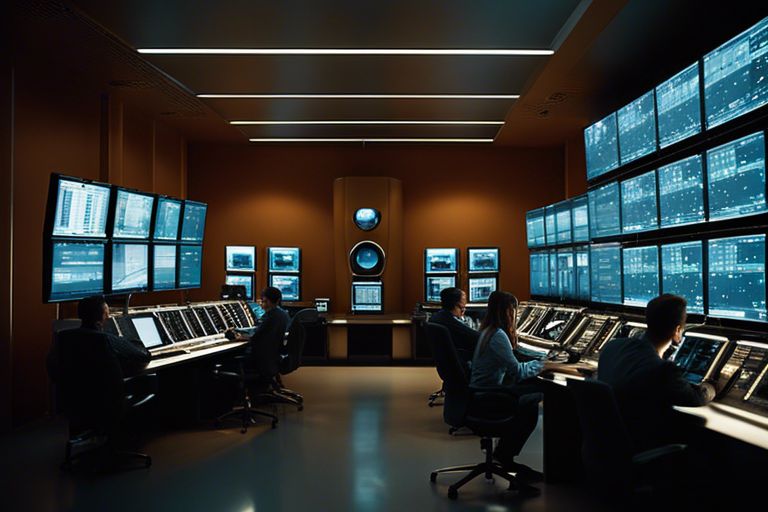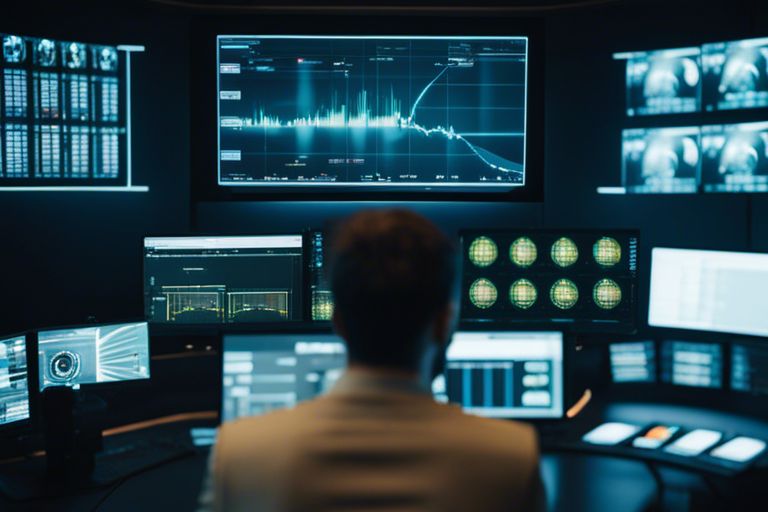Is Computer Vision The Future Of Intelligent Surveillance Systems?
Utilizing cutting-edge computer vision technology, intelligent surveillance systems have revolutionized the way security is managed. By harnessing the power of machine learning algorithms and artificial intelligence, these systems can analyze vast amounts of video data in real-time, identifying potential threats and suspicious activities with unparalleled accuracy. The integration of facial recognition and behavioral analysis has significantly enhanced security measures, making it a game-changer in the realm of surveillance. However, with great power comes great responsibility, as concerns over privacy and ethics emerge due to the invasive nature of such advanced surveillance technologies. It is crucial to delve into the potential of computer vision in surveillance while being mindful of the implications it carries.
Understanding Computer Vision
Basics of Computer Vision
Before delving into the intricacies of computer vision, it is essential to understand the basics of this technology. Computer vision is a field of artificial intelligence that enables machines to interpret and understand the visual world. It involves capturing, processing, analyzing, and interpreting images and videos to produce meaningful information.
For machines to comprehend visual data, they are equipped with algorithms that extract features from images and videos. These features can include shapes, colors, textures, and movements. By analyzing these features, computer vision systems can recognize objects, detect patterns, and make decisions based on the visual input they receive.
Advancements in Computer Vision Algorithms
With the rapid advancements in technology, computer vision algorithms have made significant progress in recent years. These algorithms have become more sophisticated and powerful, enabling machines to perform complex visual tasks with high accuracy and speed. Deep learning techniques, such as convolutional neural networks (CNNs), have revolutionized the field of computer vision by enabling machines to learn from large amounts of visual data and automatically extract features without human intervention.
Advancements in computer vision algorithms have led to breakthroughs in various applications, including facial recognition, object detection, autonomous vehicles, and medical image analysis. These algorithms have enhanced the capabilities of intelligent surveillance systems by enabling real-time monitoring, behavior analysis, and anomaly detection in crowded environments.
Application of Computer Vision in Surveillance
Obviously, the use of computer vision in surveillance has revolutionized the way security systems operate. By leveraging advanced algorithms and technologies, surveillance systems can now perform tasks that were once only possible by human operators.
Real-time Monitoring and Analysis
To enhance security measures, computer vision enables real-time monitoring and analysis of video feeds from security cameras. This technology can detect suspicious activities such as unauthorized access, loitering, or vandalism, allowing security personnel to respond promptly and effectively. Furthermore, automated alerts can be triggered when predefined rules are violated, ensuring a proactive approach to security management.
Moreover, object tracking capabilities allow surveillance systems to follow individuals or objects of interest across multiple camera feeds, providing a comprehensive view of their movements within a monitored area. This level of surveillance intelligence enables security teams to make informed decisions and take appropriate actions in real-time.
Facial Recognition and Anomaly Detection
One key application of computer vision in surveillance is facial recognition and anomaly detection. This technology can identify individuals in a crowd, track their movements, and detect abnormal behavior patterns that may indicate a potential threat. By analyzing facial features and behavioral cues, surveillance systems can flag suspicious individuals for further investigation.
Monitoring crowds in public spaces, airports, or critical infrastructure areas can be challenging for human operators. However, with facial recognition and anomaly detection powered by computer vision, security personnel can quickly identify potential risks and take preventive measures to ensure the safety of the premises.
Challenges and Considerations
Privacy and Ethical Implications
After the rise of computer vision in surveillance systems, one of the major concerns that have come to light is the issue of privacy and ethical implications. As cameras become more advanced and capable of recognizing individuals, there is a growing fear of invasion of privacy. Companies and governments must navigate the delicate balance between security needs and individual rights. The use of facial recognition technology, in particular, has sparked debates about the extent to which individuals should be monitored in public spaces.
To address these concerns, regulations and policies must be put in place to ensure that the use of computer vision technology in surveillance systems is done in a responsible and ethical manner. Transparency in how data is collected, stored, and used is crucial to building and maintaining public trust. Additionally, there is a need for clear guidelines on data retention and access, as well as mechanisms for individuals to opt out of surveillance if they so choose.
Technical Limitations and Accuracy Concerns
Limitations in current computer vision technology pose challenges to its widespread adoption in intelligent surveillance systems. Factors such as lighting conditions, occlusions, and camera angles can impact the accuracy of image recognition algorithms. False positives and false negatives are common occurrences, leading to potential errors in identifying individuals or objects of interest.
Efforts are underway to improve the accuracy and reliability of computer vision systems through advancements in deep learning algorithms and hardware capabilities. However, achieving near-perfect accuracy remains a significant challenge, especially in real-world surveillance scenarios where conditions are unpredictable.
Technical Limitations and Accuracy Concerns: Despite ongoing efforts to enhance the capabilities of computer vision technology, challenges remain in achieving consistent and reliable performance in surveillance applications.
Ethical Considerations: It is imperative for stakeholders to prioritize ethical considerations in the development and deployment of intelligent surveillance systems, ensuring that individual rights and privacy are respected.
The Future of Surveillance
Despite the controversies surrounding surveillance systems, advancements in technology continue to revolutionize the field. Computer vision is poised to play a crucial role in shaping the future of surveillance, offering unprecedented capabilities in monitoring and analyzing vast amounts of visual data.
Integration of AI and IoT
One of the key developments in the evolution of surveillance systems is the integration of Artificial Intelligence (AI) and the Internet of Things (IoT). AI algorithms empower surveillance cameras to intelligently detect and track objects, individuals, and activities in real-time, while IoT devices enhance connectivity and data sharing capabilities. This synergy enables seamless integration of data from various sources, leading to more comprehensive and efficient surveillance systems.
The interoperability of AI and IoT technologies allows for the creation of smart surveillance systems that can adapt to dynamic environments and changing security needs. By leveraging the power of AI to analyze vast amounts of data collected by IoT devices, organizations can enhance situational awareness, improve response times, and ultimately strengthen security measures.
Predictive Analytics and Proactive Security Measures
The integration of predictive analytics into surveillance systems is reshaping the way security threats are identified and mitigated. By utilizing historical data, machine learning algorithms can forecast potential security incidents and proactively implement preventative measures. This shift from reactive to proactive security measures enables organizations to anticipate threats and take preemptive action to minimize risks and enhance overall safety.
Predictive analytics not only streamlines security operations but also empowers organizations to allocate resources more effectively. By prioritizing high-risk areas and events, security personnel can optimize their response strategies, leading to a more efficient and cost-effective security framework.

Summing up
Hence, the advancements in computer vision technology have paved the way for intelligent surveillance systems to revolutionize the way we monitor and secure our surroundings. With the ability to analyze video footage in real-time, detect anomalies, and provide actionable insights, computer vision is indeed the future of surveillance. By combining AI and machine learning algorithms, these systems can enhance security measures, improve response times, and ultimately create safer environments for all. As the technology continues to evolve and improve, we can expect to see even more sophisticated and efficient intelligent surveillance systems being deployed across various industries and sectors to address the growing security challenges of today’s world.
FAQ
Q: What is Computer Vision?
A: Computer Vision is a field of artificial intelligence that enables computers to interpret and understand the visual world through digital images or videos.
Q: How does Computer Vision work in Intelligent Surveillance Systems?
A: In Intelligent Surveillance Systems, Computer Vision uses algorithms to analyze live video feeds, detect objects or activities of interest, and alert operators of potential threats or anomalies.
Q: What are the benefits of using Computer Vision in Surveillance Systems?
A: Computer Vision enhances surveillance systems by providing real-time monitoring, automated threat detection, accurate object recognition, and significant reduction in human error.
Q: Is Computer Vision technology reliable for security purposes?
A: Yes, Computer Vision technology is highly reliable for security purposes as it can continuously monitor large areas, identify suspicious behavior, and improve overall response time to potential security threats.
Q: What is the future outlook for Intelligent Surveillance Systems using Computer Vision?
A: The future of Intelligent Surveillance Systems using Computer Vision is promising, with advancements in AI technology, deep learning algorithms, and edge computing leading to more efficient, accurate, and proactive security solutions.
![]()













